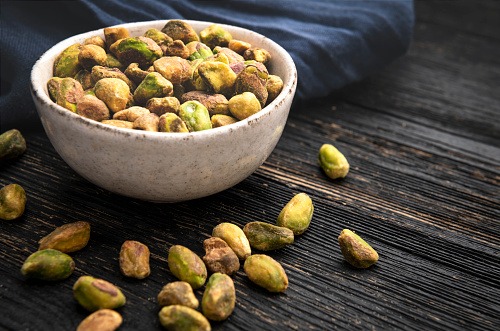Record Pistachio Crop on the Cards After Heavy Precipitation in California

Heavy precipitation has replenished groundwater and water reservoirs across California, breaking the drought which plagued the state since 2020. So far in the water year, which started in October, statewide rainfall for California stood at 155% of the historical average. Data from California’s Department of Water Resources show that from October 1st, 2022 to January 25th, 2023, California received statewide average precipitation of 18.08 in (459 mm) compared to the historical average of 11.70 in (297 mm). Both the San Joaquin 5-station (at 169% of the normal) and the Tulare Basin 6-station (at 176% of the normal) reported heavy rainfall for the first four months of the water year. Both of these weather stations are located in the most important pistachio-growing regions of the US. Statewide water reservoirs have been replenished to 98% of the normal and snowpack in the Sierra Nevada is at 128% of the normal.
*Until January 27th
Source: California Department of Water Resources
While water and flood damage has been reported, the heavy rainfall is mostly positive for the Golden State. Looking specifically at pistachios, the 2023/24 crop could be a bumper crop and possibly surpass all previous records. There are several reasons this could be the largest crop on record:
Recent Rainfalls
Most nut trees in California are irrigated and are still able to provide decent yields during droughts. However, even with irrigation, water uptake and subsequent production are suboptimal. Recent rainfalls have replenished the soil across the whole root area, allowing trees to optimize growth and production. Full water reservoirs and heavy snowpack in the Sierra Nevada also mean more water resources are available for the rest of the growing season and any water restrictions are unlikely.
A Record Area Under Bearing Trees
The area under pistachios that are bearing nuts has increased by an average of 12% per year over the last 5 years. In 2022 the area under bearing trees was 427,178 acres and there were also 127,716 acres of non-bearing pistachios, of which some will come into production in 2023 to be harvested in September.
Source: Administrative Committee for Pistachios (ACP)
The Alternate Bearing Cycle of Pistachios
Pistachios are an alternate bearing crop, so named because a year with high yields is normally followed by a year with lower yields. This is because new flower buds are formed at the same time as nuts are developing. In a year of high yields, the tree will use the majority of its resources to grow nuts and less for flower bud development, and vice versa. 2022 was a year of comparatively low yields (at 2,057 lbs/acre), and trees could spend more resources on flower bud production. These are the flower buds that are currently on the trees, and which will be pollinated in April and harvested in September. So the recent rains will not add more flower buds for the 2023 season, but it should result in good yields from the existing buds. Yields could jump back to around 2,800 lbs/acre or even higher.
Source: ACP
While the harvest is still 7 months away, a record harvest is on the cards. Conservative estimates would forecast the bearing acreage in 2023 at 450,000 acres, and yields at 2,800 lbs/acre, resulting in a crop of 1.26 billion lbs, beating 2021’s record 1.15 billion lbs. While this is impressive from a production standpoint, the US is already stuck with an oversupply of pistachios. The 2022/23 season could end with inventories of more than 250 million lbs, which is a stocks-to-use ratio of more than 30%. Furthermore, 2023 is also an on-year for the world’s second-largest pistachio producer, Turkiye. Read more about the effect of coinciding on years here. As both the US and Turkiye are expecting large crops in 2023, it means an oversupply of pistachios in the 2023/24 season and a bearish price outlook based on supply and demand.

